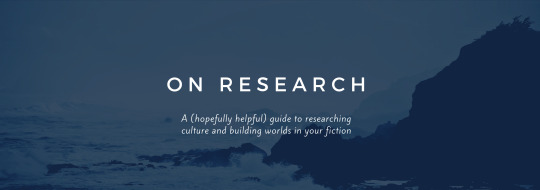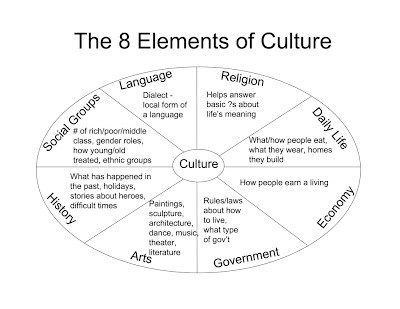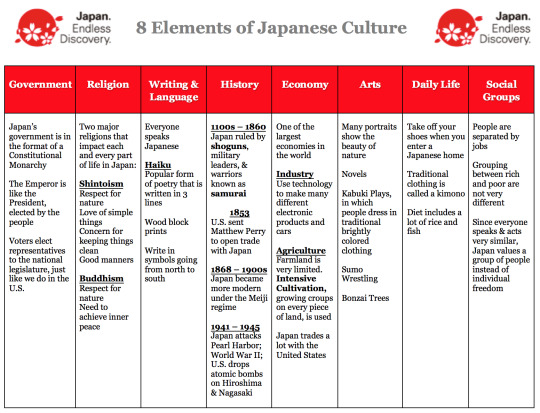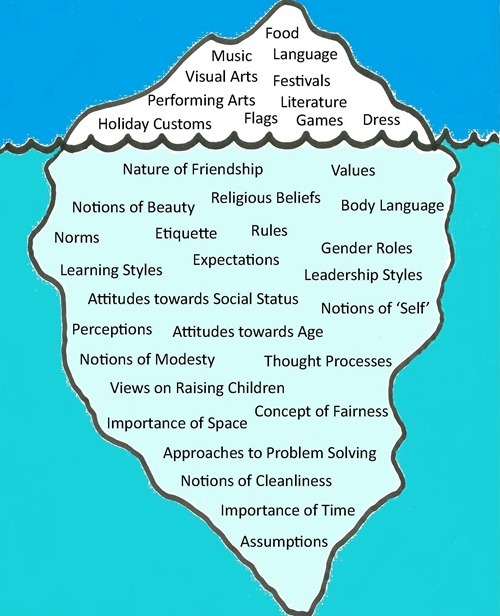#It's mostly like the regular posts and fanfiction where I see this issue creep up
Text
Ok it's been a hot moment for the Splatoon community, and I'd just like to remind everyone that Deep Cut are BEST FRIENDS. THEY DO NOT ACTUALLY HATE EACHOTHER. It's fun to joke about it but just know that THEY DO NOT HAVE ANY MALICE TOWARDS EACHOTHER. Please don't mischaracterise them because you're salty over splatfest results. You can be salty but don't get so worked up over a fictional idol. Thank you.
#splatoon#splatoon 3#splatfest#shiver vs frye vs big man#thankfully I haven't really seen much mischaracterization on the fanart side of things#It's mostly like the regular posts and fanfiction where I see this issue creep up#STOP PITTING THREE BAD BITCHES AGAINST EACHOTHER IT'S NOT SHIVER'S FAULT SHE'S SO POPULAR
73 notes
·
View notes
Text
On Research: Worldbuilding and Culture

Hullo, in this post I’m going to talk about how I research and do world-building for my stories!
I’m doing this through the following ways:
1) using chapter 1 of my historical Taegi fic to illustrate what I did to research the era and the culture for that period,
2) providing the templates and tools I used in the hopes that it can help some of you all writers if you ever want to write your own research-intensive stories or original fiction that requires world-building!
While I’m using my BTS Taegi fic as a means to explain my process, this post is for any sort of writing project - original or fanfiction. If you follow me for fic, though, there will be chapter 1 spoilers for it. So if you haven’t read that yet, be-warned that there be spoilers below!
> How I do my research/world-building:
If your idea for the actual story is agnostic of time-period or setting, identifying that is possibly the first step. My initial idea for this story was to have it take place during a war (the Imjin War between Japan and in 1590s was the first choice) but finding the spooky landscape to set it against while also maintaining the drama and tension of a battlefield was going to dilute the characters and their inner conflicts.
So I went back to reading about Korean history in broad terms (Google Books is your friend) , trying to locate a time-period to set my story in. I finally chose this time-period because it was very interesting to me in multiple ways.
- it’s still a way away from the big social reforms in Korea in the 1800s that would push it into the Modern Period of history
- it was a time period when common people and peasants began to lose trust in the king and the upper-class bureaucracy, leading to peasant rebellions and some villages stockpiling their own grains
- it is a time when global influences were beginning to creep into Korean society, including Christianity. In fact, just a few years from this, a major wave of persecution would be unleashed against Catholics in Korea.
- I chose this time-period also because I wanted the level of organization of society that’s in this fic. It’s been established already, which means the characters are at a point of history where things are more or less stable in terms of what is expected of them as a member of this society. I needed that stability to create a quieter sort of period mystery.
To research for this story (or any other), once I pick the time period, I start looking for answers to my biggest questions:
1) how did they live: this includes food, travel, interests, societal hierarchy and organization, family structure, music, religions, and mythology. Basically, anything that they shared as a cultural group. In doing this, I had to separate royalty from common folk, because so much history is written about the royals and there’s so less about the folk. I looked up everything from the food that the common people ate to the issues they faced (winter and the gap between rice and barley cultivation was a huge aspect; so huge, in fact, that the popularity of kimchi can be attributed to needing a protein source in the winter that wouldn’t go bad). I looked up clothes and fabrics and the layout of villages. I looked for traditional crafts. And when I did, I found myself going down rabbit holes about caste professions (the shaman, for example, is of low caste in Joseon society, which was surprising to me considering so many period fics I’ve read has depicted them in a different fashion.)
I know that this feels very disorganized and random, but that’s because I have been doing world-building—both fantasy and historical—for a long time, and my process is built basis what I’ve historically realized works for me. But to make this post more useful, I’ve figured out a template that helps to look into culture. I used to use this to build original fantasy worlds, and I think it is useful.

And here is a graphic where someone has analyzed Japanese culture through this lens:

Most cultures share elements of commonality. You can use this graphic above to figure out how to research. For example, the culture of Joseon Korea as I have tried to research for this fic comprises of:
1) Language (written and spoken - so Korean; Hangul, + Chinese characters);
2) Religion (shamanism + neo-confucianism)
3) Government (caste system + agrarian bureaucracy + royalty) etc.
You can fill in the blanks this way for any time period and thus get a better understanding of the culture you’re writing about.
Additionally, I’ve spoken about the cultural iceberg on twitter before, but I find it very useful when I’m researching to pick up on each element in it and look up information pertaining to them.

This is how I use the iceberg:
> the top portion is usually the things that we’ve picked up on, through Run episodes or general Bangtan stuff. Like, we know hanbok is Korean traditional dress. We know the kind of food they eat. We know the music scene in SK, and that the major festivals are seollal and choseok.
> the bottom portion is where you gain deeper intercultural understanding. Notions of modesty, for example. We know that gender roles in Korea are more entrenched than they are in the west. In this fic, men are the ones mostly occupying spheres of influence, but women have their own spheres—we’ll get to that in a while. If you see, there’s an aspect called ‘nature of friendship’. This is where the concept of hyung-line/maknae-line/same-age friends all fit into this culture. It’s less visible than the top half, but you can still gain knowledge of it. Similarly, ‘attitude towards elders’ or ‘concepts of beauty’ are both aspects of culture. These are keywords you can use to learn more about culture. Again, you can also use this in original writing projects to build your fantasy world. I know I do :)
Now that I know how my characters live, I come to the second stage of planning/world-building:
2) where in society are my characters: since I’m writing a mystery, I need someone who wants to solve it. I need detectives. I read up on everything I could about the Joseon lawmaking process, going through scholars and bureaucrats and ministers before I found a smaller, quieter force: the podocheong. I also need medics, people in charge of administration, senior officials, and so forth. For each of this, I tried to look into how my character could have entered that role, what that role comprises of, and where it puts them in that society. Seokjin, because he is a senior official, would require to have taken a test to enter into that force. His family would have to be of a particular class status to even enable him to take it. Knowing this, I looked up everything I could about the gwageo because I found it so fascinating! There were whole coaching centers dedicated to just teaching children of upper-class bureaucrats so they could pass the gwageo! If you belonged to an upper-class yangban family, and you didn’t pass the gwageo for four generations, your titles could be stripped from you. This is another nugget of information that I thought would be an interesting premise for a character being a in a particular conundrum—you’ll see that later in the story.
For Taehyung, being an artist in that age would have come with interesting baggage. Calligraphers and painters were usually higher-class folk. Peasants simply did not have the time or the materials to pursue art. But there are outliers—inkstick craftsmen, for example, are among what was considered the ‘vulgar common caste’ but they were the ones who made ink and color pigments.
This just helps me create a richer world than I would have without putting in this research. It also makes your world seem more cohesive, lived-in, and deep.
So now that I know how they live and who they are, we come to:
3) what are my external/internal conflicts: my characters behave the way they do because of the culture and the customs of the time period. My external conflict—the murders—have to be set against a background of this, and informed by this. So I chose to make Yoongi a sort of disgraced scholar because it allows him to operate outside of his station: he needs to talk to Taehyung, or villagers for example who are all beneath his station, and he wouldn’t be able to do that to the same effect if he is a regular scholar like Jin is. The culture simply won’t allow him to. That also leads to friction between yoonjin, and secrets once they start appearing. His current station helps him integrate better into Tae’s world, while removing him from the world he’s working for. It also serves for his internal conflict, fears and grief.
Now if I were to extend this example to a more contemporary story: say your characters are in modern Seoul. Your external/internal conflicts can still be tied into the culture. Expectation on children to look after their aging parents OR the character’s family values vs. individual outlook OR Korea’s culture of students studying late into the night vs. the slowing job industry etc. For a Jinkook fake-dating AU, say, consider what are the troubles that Jin and Jungkook, who have 5 years between them, individually face. 27 year old Jin’s place in society, social spheres and worries will be very different from just-out-of-college Jungkook’s.
Why does any of this matter?
I just think putting in some effort to understand culture makes for richer characters, a richer world, and better writing. Not to mention it lets you learn about a new culture, which I think is fascinating, especially if you spend so much of your time thinking/talking about 7 Korean boys.
So to summarize— I guess this is how I research/worldbuild:
1) Find out when and where
2) Find out who, and how that character is affected by the customs/culture of that era/setting
3) tie my external/internal conflicts back to the era/setting so that the world feels truly lived in and alive.
For truly good world-building, make sure that your conflicts are caused by limitations imposed on a character due to their cultural setting, or because whatever is happening is outside of their comfort zone. Human beings don’t live in a vacuum. The society and the values that we grow up in affects everything we do, every decision we make. Even rebelling against that culture is an aspect influenced by that culture. Your world (fantasy or otherwise) will feel way less flat if it follows the rules of actual cultures world over.
*mic-drop*
If you found this post useful as a resource for writing/world-building, please consider a small ko-fi donation!
[PS: Clarifying that I will not be taking ko-fi for the fic itself - only for the original content that I provide here, on this blog, which can be used for fanfiction or original world-building.]
72 notes
·
View notes